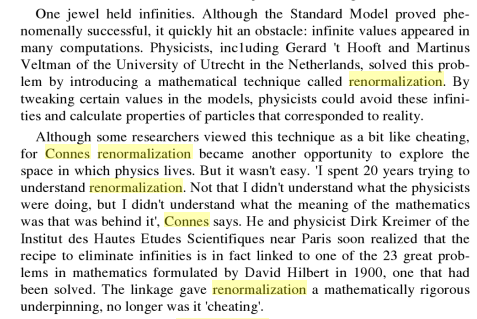$\pi$ as irrational (Lambert, 1761) and transcendent (Lindemann, 1882) number can be described neither as a rational number nor as a zero of a polynomial of finite degree with rational coefficients nor one can deliver all it's digits. So it needs some definition for
$\pi$. One definition is:
$\pi$ equals to the ratio of a circle's circumference to its diameter in plane euclidean geometry. When is a plane (in general: a two-dimensional manifold) euclidean? If and only if it's Riemannian curvature tensor vanishes.
How can the value of
$\pi$ be computed following that? There is the well known construction of inscribed resp. circumventing regular n-polygons, giving
In[26]:= (* circumventing regular n-polygon *)
2 Limit[n Tan[180 °/n], n -> \[Infinity]]
Out[26]= 360 °
In[27]:= (* inscribed regular n-polygon *)
2 Limit[n Sin[180 °/n], n -> \[Infinity]]
Out[27]= 360 °
where
$\tan(180°/n)$ resp.
$\sin(180°/n)$ is half the length of an edge of the considered regular n-polygon. (If one computes not in euclidean geometry, these lengthes were wrong, of course.) You might consider this tautological, because the Degree of Mathematica contains the
$\pi$ in it's definition. It is not, because
$\sin$ and
$\tan$ do not contain
$\pi$ in their series definition. But you can convince yourself that Mathematica uses the right value of
$\pi$ with the following consideration: Taking only 2^n regular polygons into consideration, the limit does not change and the circumference of the 2^n regular polygon is expressed by square roots and powers of 2 only:
In[52]:= With[{n = 123},
N[Nest[(2 # /. Sqrt[2] -> Sqrt[2 + Sqrt[2]]) &, 8 Sqrt[2 - Sqrt[2]], n], 2 n]
]
Out[52]= 6.2831853071795864769252867665590057683943387987502116419498891846156328\
1257098986162045917883806187127902815967288537806793180869782848721205\
0555637834194124504452962092149680342499114209242596992338657138220315\
84148958096646003985015159139416694
In[53]:= %47 - N[2 \[Pi], 123]
Out[53]= -1.42813563561047184617226468526801335367923522626*10^-75
What about NASA and their changed value of
$\pi$? NASA does not have to do it with euclidean geometry. That's it. They have to get their stuff to the right point in space and time and in order to do so they have to face some nifty disturbations known as the real world. What they in fact use are renormalization techniques: If you have a simple formula, e.g.
$W(x,y) = \pi A(x) B(y)$ which does not fit reality, you could go down the model stack considering more complicated models, e.g.
$W(x,y)=\pi \int\int A(x')B(y')K(x-x',y-y')dx'dy'$ and so on ... but by chance you sometimes find out, that everything fits perfectly (in the application range) if only you changed
$\pi$ a little bit without taking more complicated models into consideration. This is called renormalization and is used in many branches of physics (e.g. the effective mass of the electron in semiconductor physics, dimensional renormalization in quantum field theory, ... ). In our days it has found also the interest of pure mathematics, e.g. search the web for a PDF by Matilde Marcolli called Renormalization for Dummies.
Here is some short description

from another book: Michael Schmiechen, Newton's Principia and related 'principles' revisited.